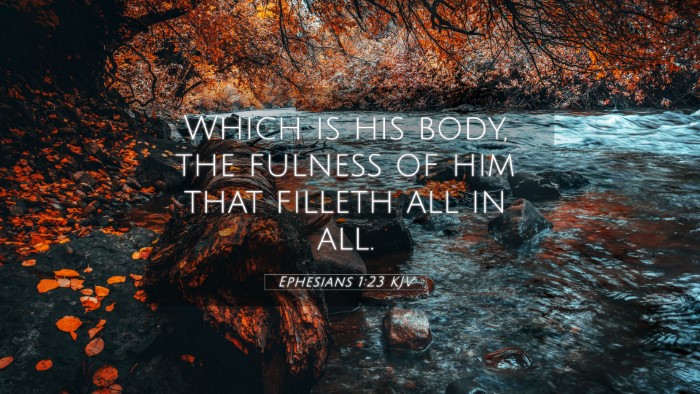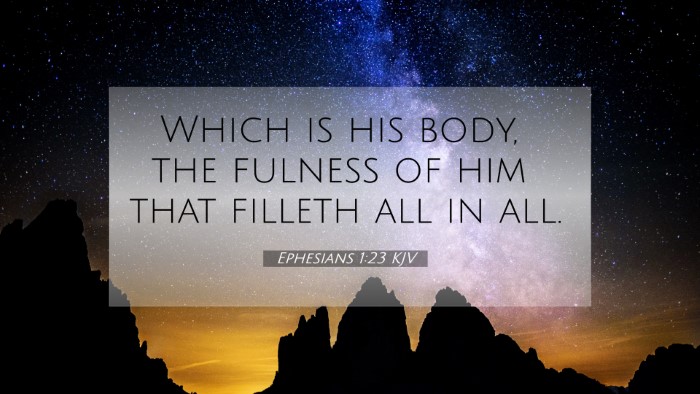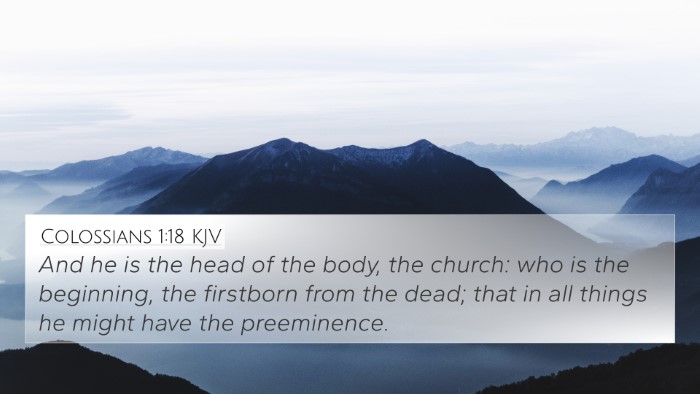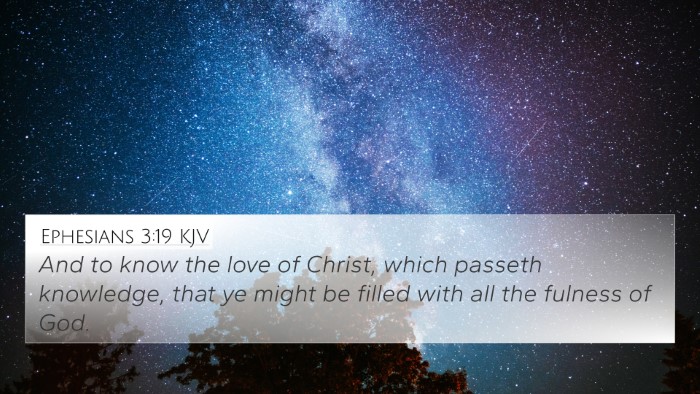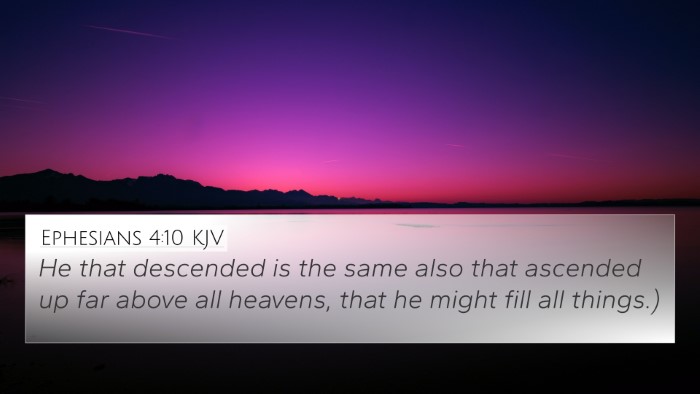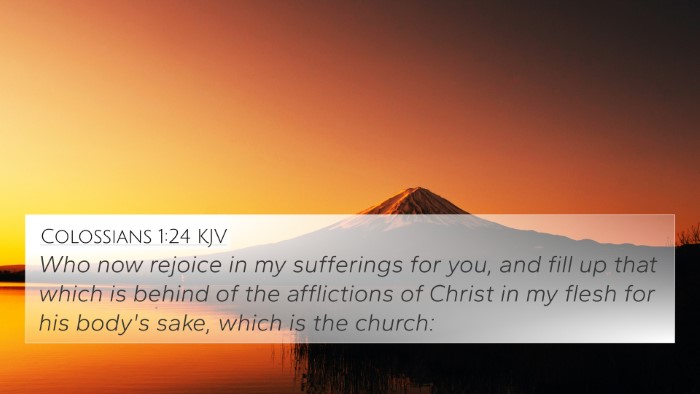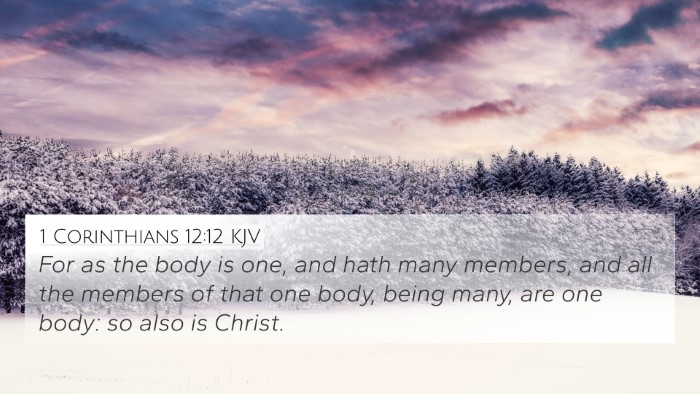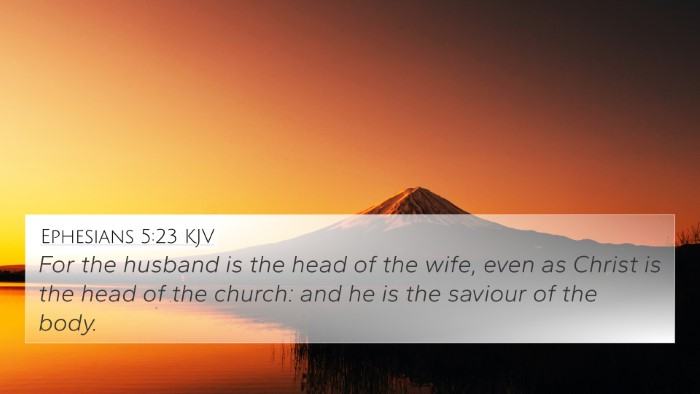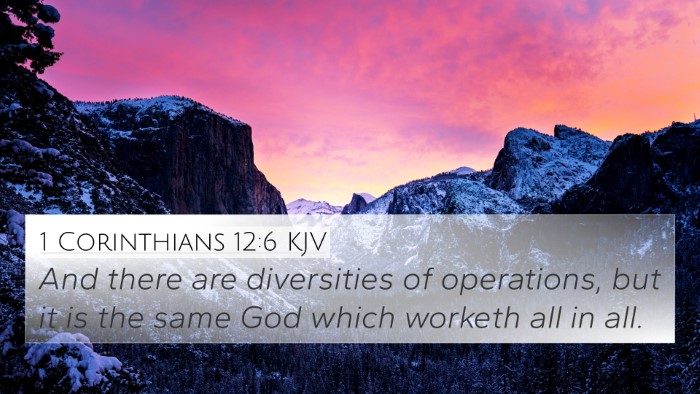Ephesians 1:23: An Exploration of Meaning
The verse Ephesians 1:23, which reads, "Which is his body, the fullness of him that filleth all in all," holds profound implications in understanding the Church and Christ's relationship to it.
Summary of Ephesians 1:23
This verse illustrates the Church as the body of Christ, emphasizing that Christ is the head of the Church and that the fullness of His presence is manifest in His people. The connection of Christ and the Church is central to understanding the believer's identity and purpose.
Commentary Insights
Matthew Henry's Commentary
Matthew Henry explains that this verse conveys the concept of Christ and His Church being interdependent. The Church, as His body, receives life, sustenance, and direction from Christ. The fullness of Christ implies His divine presence is accessible to the believers, forming a complete and living representation of His glory in the world.
Albert Barnes' Notes
Albert Barnes emphasizes the notion that the Church is not merely a human institution but a divine organism united with Christ through faith. The fullness referred to by Paul means that all spiritual blessings are found in Christ and flow through the Church. This idea reinforces the call to recognize the Church's significance in God's plan of salvation.
Adam Clarke's Commentary
Adam Clarke points out that this verse reflects the mystery of the union between Christ and believers. He elaborates on the concept of 'fullness,' noting that the Church serves as a vessel for Christ's influence, embodying His mission to the world. This highlights the Church's purpose to manifest Christ's teachings and love to others.
Connections with Other Bible Verses
Ephesians 1:23 can be cross-referenced to deepen understanding. Here are 8 pertinent passages that relate to this verse:
- Colossians 1:18: "And he is the head of the body, the church..." - This reinforces the concept of Christ as the head.
- 1 Corinthians 12:12-27: This passage discusses the Church as one body with many members, reflecting diversity in unity.
- Romans 12:4-5: Here, Paul describes believers as being one body in Christ, emphasizing unity and diversity within the Church.
- Hebrews 3:6: "But Christ as a son over his own house; whose house are we..." - This verse illustrates believers as part of God's household.
- John 15:5: "I am the vine, ye are the branches..." - This speaks to the essential connection between Christ and His followers.
- Acts 2:42: Describes the early Church's devotion to teaching, fellowship, and breaking of bread, evidencing the active body of Christ.
- 2 Corinthians 5:17: "Therefore if any man be in Christ, he is a new creature..." - Signifying transformation experienced in the body of Christ.
- Philippians 2:1-2: Encouragement to fulfill the joy of being like-minded in the body of Christ.
Thematic Connections
The themes presented in Ephesians 1:23 resonate with various scripture passages and concepts throughout the Bible, providing a richer understanding of ecclesiology (the study of the Church). The interconnectedness can enhance comparative Bible verse analysis and allow believers to grasp identity in Christ more fully.
Tools for Bible Cross-Referencing
- Bible Concordance: A helpful resource for finding cross-references.
- Bible Cross-Reference Guide: Useful for locating scripture connections efficiently.
- Cross-Reference Bible Study: Methods that promote deeper understanding through related passages.
- Comprehensive Bible Cross-Reference Materials: Collections that provide extensive inter-Biblical dialogue.
How to Utilize Cross-References
To effectively interpret Ephesians 1:23 and its related verses, utilizing a Bible concordance can aid in identifying connections between Bible verses. When exploring how verses interact, consider thematic links and contextual backgrounds to glean richer insights into spiritual truths.
Conclusion
In summary, Ephesians 1:23 serves as a pivotal text for understanding the unity between Christ and His Church. This verse can be illuminated through an interdisciplinary approach involving historical context, theological insight, and cross-referencing with related passages. Engaging with the broader scriptural narrative enables a comprehensive understanding of what it means to be part of the body of Christ, fostering unity among believers and reinforcing the importance of communal faith journeys.

